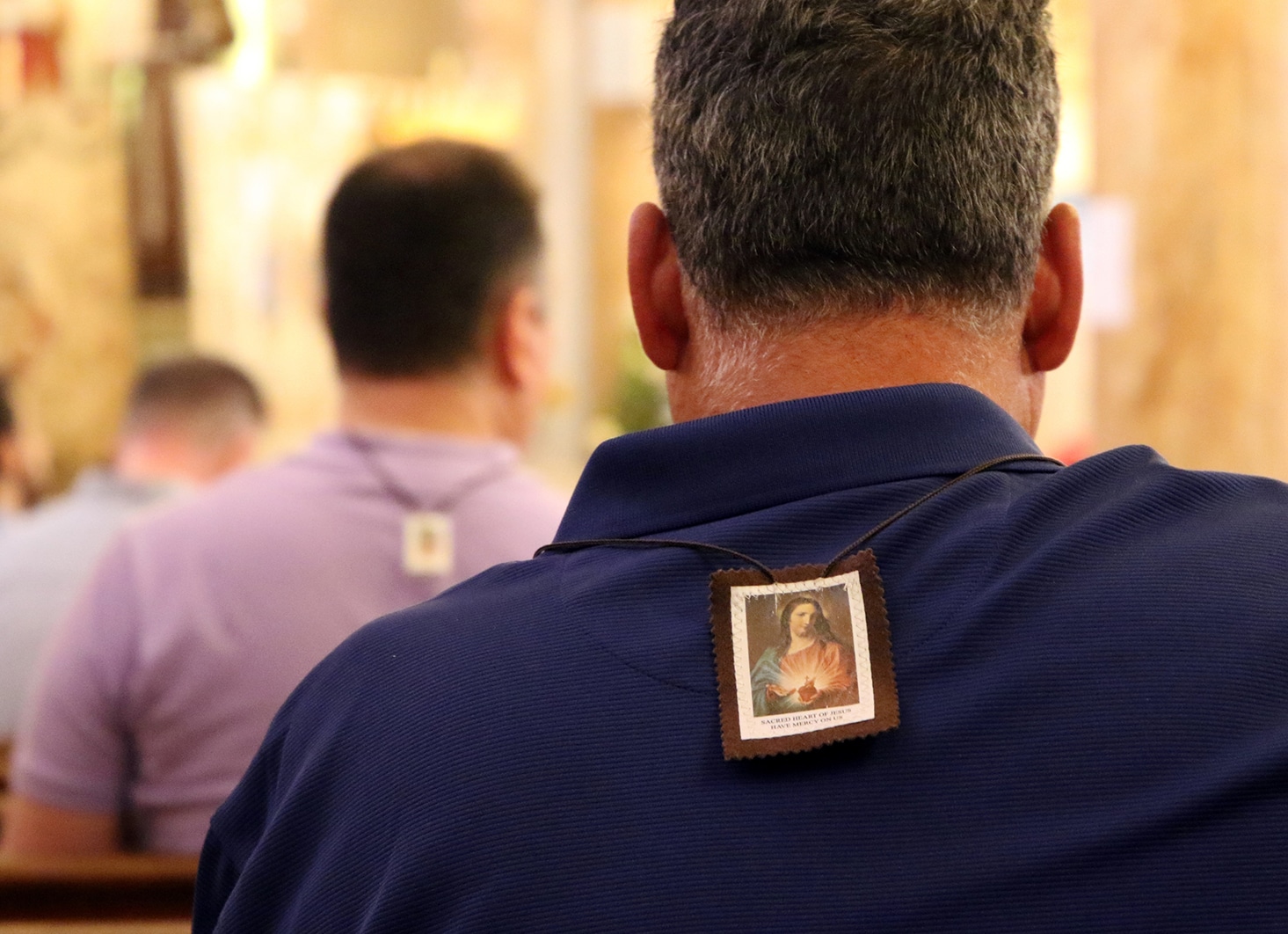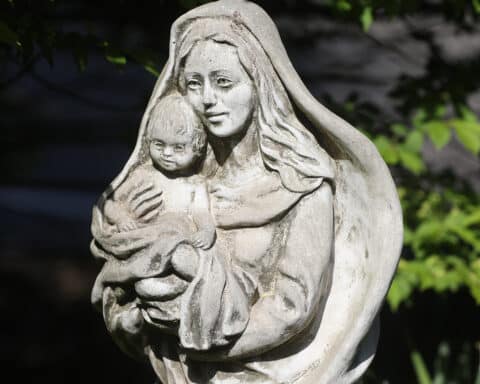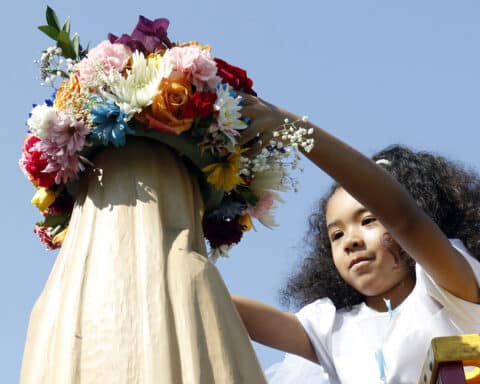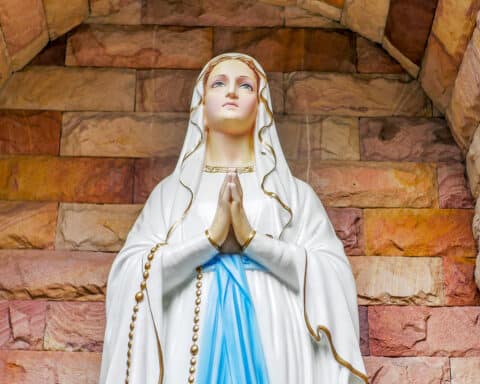Question: What are the Marian promises (including specific conditions) to the wearer of the St. Simon Stock brown scapular upon the wearer’s death, concerning the guarantee of heaven for the wearer? I’ve heard so many different stories from devout Catholics, as well as from different priests. I know that you can set the record straight.
— J.M. Kuno, Mt. Juliet, Tennessee
Answer: In Latin, scapula means the shoulders. The term “scapular” refers to any sort of garb worn about the shoulders. Most religious orders wear something about their shoulders that often drapes down in the front and the back like a “sandwich board” as a kind of identification of their order and their devotion. Among the laity there has arisen a devotion of wearing a much smaller version of this that resembles a necklace with a medal or swatch of cloth on the front and back. It is often worn under the clothes. The wearing of such scapulars indicates some sort of connection to a religious order and a devotion to a saint, usually Our Lady. There are various requirements and prayers associated with the wearing of scapulars.
As for the “brown scapular,” it was given to St. Simon Stock in the 13th century by the Blessed Virgin Mary. It is a kind of miniature habit of the Carmelite order that all Catholics can wear as a sign of their devotion to Mary.
While there are no special prayers or good works that are required of the wearer, the brown scapular is expected to be a sign that shows one’s consecration and dedication to the Blessed Virgin Mary. We are expected to venerate her, love her, trust in her protection and stay close to her in prayer. There are additional promises to those who observe certain requirements. Our Lady of Mount Carmel promised to save those who wear the scapular from the fires of hell and to shorten their stay in purgatory, if necessary. This promise presupposes the following: That the faithful wear the brown scapular continuously, observe chastity according to one’s state in life and recite five decades of the Rosary daily. (Spiritual directors can substitute other practices for the Rosary). Perhaps the best-known fact about the scapular is Mary’s promise to St. Simon Stock that “Whosoever dies wearing this scapular shall not suffer eternal fire.” However, the brown scapular is not an avoid-hell-and-get-into-heaven-free cloth that excuses us from living a Christian life. To do otherwise misses the scapular’s meaning, thinking a sinful life is OK or that Our Lord’s mercy can be “bought.” One is expected to live a faithful life in accordance with the Gospel. If one wishes to wear the brown scapular, he or she should ask to be “enrolled” (a simple ceremony which can be performed by any priest). Simply wearing a blessed scapular from a gift shop falls short of this but is not wholly wrong. The goal however is to be “enrolled.”
Other scapulars, such as the green scapular, exist and have different meanings and connections, but the brown scapular is the most widely known.





